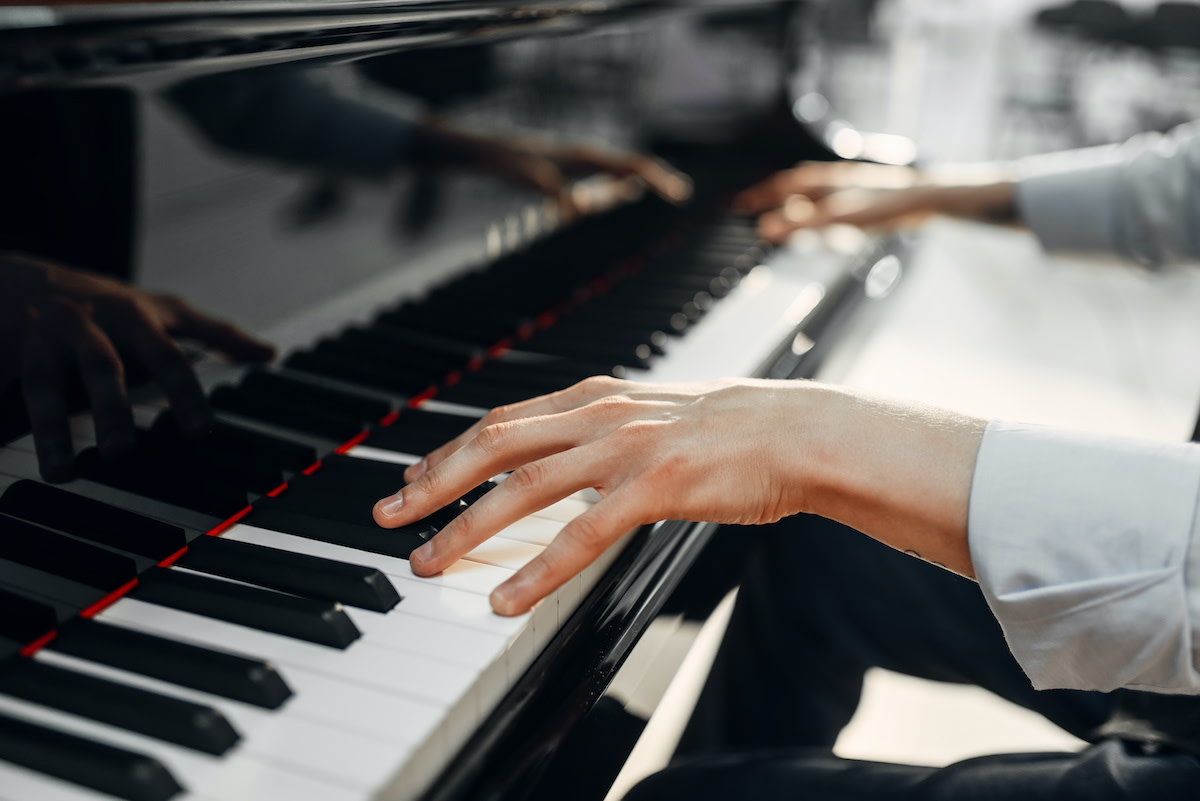Stride Piano Guide: How to Play the Stride Left-Hand Technique
Written by MasterClass
Last updated: Jun 7, 2021 • 3 min read
Stride is a difficult left-hand jazz piano technique to master, but the flashy and exuberant style is perfect for entertaining a crowd of listeners.
Learn From the Best
What Is Stride Piano?
Stride piano is a jazz piano style with roots in American ragtime piano music. Stride piano playing requires a left-hand technique in which the pianist plays a four-beat pulse alternating between a bass note on beats one and three and a chord on beats two and four. This alternating action between a bass note and chord produces a highly rhythmic "oom-pah" sound. Stride players' left hands have to jump, or “stride,” long distances across the piano, which frees up the right hand to do high-speed, exciting riffs and improvisations.
A Brief History of Stride Piano
The stride piano style, often called Harlem stride piano, rose to prominence in 1920s New York and evolved out of the heyday of ragtime music, which spanned from 1895 to 1910. A group of Black jazz pianists developed stride music to be a swanky, playful, and aggressive solo piano style with a freely swinging rhythm strong enough to entertain a large gathering of people.
Stride music features more complex harmonies and blues elements than traditional ragtime, and stride pianists are more likely to improvise while playing. Stride piano influenced generations of pianists, and in 2020, the Recording Academy added the James P. Johnson song “Carolina Shout,” which prominently features the stride technique, to the Grammy Hall of Fame.
4 Characteristics of Stride Piano
The stride technique is a highly rhythmic style of piano playing with an alternating bass note and chord action. Characteristics of stride piano include:
- 1. Left-hand jumping: The term "stride" refers to the pianist's left hand leaping across the piano keys.
- 2. Four-beat pulse: In stride piano playing, there is a four-beat pulse with alternating bass notes and chords. The left hand traditionally plays a single bass note, octave, or tenth on the first and third beats of the 4/4 measure and a chord on the second and fourth beats. Meanwhile, the right hand plays syncopated melodic lines with riffs, harmonies, and fill-in patterns.
- 3. Solo playing: The stride technique requires no rhythmic or harmonic accompaniment, making it a technique used almost exclusively for piano solos.
- 4. Improvisation: Ragtime music is traditionally composed, but it's common for stride players to improvise as they play.
3 Famous Stride Pianists
Three pioneers of the stride style infused innovative harmonic, rhythmic, and melodic figurations into their performances.
- 1. James P. Johnson: Dubbed the "Father of Stride," Johnson played a pivotal role in the evolution of ragtime into early jazz. In 1923 he composed “The Charleson,” which was one of the biggest hit songs of the decade. For pianists of the era, playing Johnson's 1918 piece “Carolina Shout” was a test of skill and a rite of passage.
- 2. Willie "The Lion" Smith: Smith was a master stride piano player whose flamboyant personality made him a natural entertainer. Throughout his career, Smith mentored several talented young musicians including Duke Ellington, Artie Shaw, and Bix Beiderbecke. Smith earned the nickname “The Lion” for his courage while serving in World War II as a drum major.
- 3. Thomas "Fats" Waller: As a pianist, composer, singer, and comedic entertainer, Waller was one of the most critically and commercially successful musicians of his time. Like James P. Johnson, his innovative techniques in the stride piano style helped lay the foundation for early jazz piano. Two of his biggest hits, “Ain’t Misbehavin’” and “Honeysuckle Rose” are both in the Grammy Hall of Fame.
Other prominent stride and stride-inspired twentieth-century jazz pianists include Luckey Roberts, Duke Ellington, Art Tatum, Donald Lambert, Cliff Jackson, Mary Lou Williams, Oscar Peterson, Teddy Wilson, Count Basie, Dick Hyman, Thelonious Monk, and Erroll Garner.
Want to Learn More About Music?
Become a better musician with the MasterClass Annual Membership. Gain access to exclusive video lessons taught by the world’s best, including Herbie Hancock, Itzhak Perlman, St. Vincent, Sheila E., Timbaland, Tom Morello, and more.
